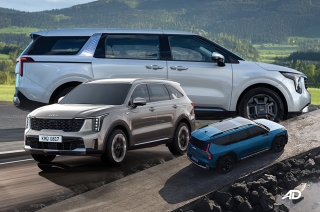
With more cars on the roads today, your car’s safety features can save you from sustaining bodily injuries, costly vehicle damage, and the hassle of filing a police report.
Through the years, car manufacturers have been putting more effort to make structurally sound vehicles with safety features such as Anti-Lock Brake System and Electronic Stability Control. But the question is, do you know how these safety features work?
To help you understand, we’ve outlined today’s car safety features and how it applies to different scenarios on the road.

Scenario#1 – The car in front of you suddenly halts
A vehicle with Anti-Lock Brake System (ABS) will give you full control to the steering wheel even when you swiftly hit the brakes. It comes with wheel sensors will detect if your car’s tires lock-up. It will then pump the brakes so the tires don’t lock, allowing your car to turn and avoid collision.
Having an Adaptive Cruise Control is also a great feat in this kind of scenario. This feature automatically puts the vehicle to the safe driving distance. It uses a radar (normally positioned behind the grille or rear view mirror) to detect not only the speed but as well as the distance of the vehicle in front of you.

Scenario#2 – A pedestrian shows up out of nowhere
Electronic Stability Control or most commonly referred to as ESC prevents the vehicle from sliding and skidding when you unexpectedly steer away from either an obstacle or a pedestrian. It works by adjusting the vehicle’s power and brake pressure and aligns the car to a straight line. Large vehicles like SUVs commonly have ESC because of their high center of gravity.
Some cars have the pedestrian detection safety feature, which automatically puts the car to full stop when its built-in sensors detect a pedestrian. Ford Focus and Volvo XC60, comes with this high-tech car safety feature.

Scenario#3 – Head-on collision thanks to the guy who counter-flowed
One of the most common safety feature in a car is airbags. Airbags automatically inflate to reduce the impact between your head and the steering wheel. It will then immediately deflate when you hit it. In addition to front airbags, new cars also have integrated side airbags, curtain airbags, and knee airbags for different collision scenarios.
However, take note that airbags only deploy when sensors in your car detect a strong enough impact that requires it. If not, it will not deploy.

Scenario#4 – Reversing to a tight and crowded parking space
With a reverse parking sensor, you don’t have to worry hitting the vehicle behind you. When you are too close to a car, wall and any other barrier, the sensor will automatically trigger the alarm, warning you to stop. Better yet, get a reverse camera that will give you unrestricted view of what’s behind you.

Scenario#5 – When it is too dark to see anything on the road
At times, there will be roads and streets that are too dark to pass through. With adaptive headlights, there is no need to manually turn on or dim your car’s lights. It will automatically adjust the light based on the road condition.
Car safety features are practical especially with undisciplined drivers and the Philippines’ road conditions, and bumper-to-bumper traffic. But don’t rely on it all the time! Always be cautious and practice defensive driving.
Latest Features
-
How to prepare your car for the Holidays / Featured Article
Here are our handy tips on how to keep you on the road and stress free this holiday season.
-
An all-electric future: The Porsche Macan Electric / Featured Article
Porsche’s Macan goes all-electric; it’s a new beast with an electrified heart, yet unmistakably Porsche in performance and spirit.
-
Which Kia should I buy? / Featured Article
We’re here to help you decide which Kia vehicle is best for you, whether it’s a sedan, crossover, or minivan.
Popular Articles
-
Electric Vehicles in the Philippines for under P1 million
Jerome Tresvalles · Aug 19, 2025
-
Top 3 Cars For Every Lifestyle—What Cars Are Right For You? | Behind a Desk
Caco Tirona · Apr 24, 2024
-
5 Tips to Maximize Fuel Efficiency
Jerome Tresvalles · Sep 09, 2024
-
Five driving habits that are draining your fuel tank
Jerome Tresvalles · Jun 24, 2025
-
Can engine braking harm your engine?
Jerome Tresvalles · Sep 11, 2025
-
Do electric cars even need maintenance?
Jerome Tresvalles · Oct 23, 2024
-
Best vehicles for an active outdoor lifestyle
Shaynah Miranda · Jul 25, 2024
-
How to drive different types of vehicle transmissions
May 23, 2024
-
5 easy ways to keep your car interior clean
Allysa Mae Zulueta · Nov 15, 2021
-
How to survive Metro Manila traffic
Earl Lee · Aug 16, 2022



